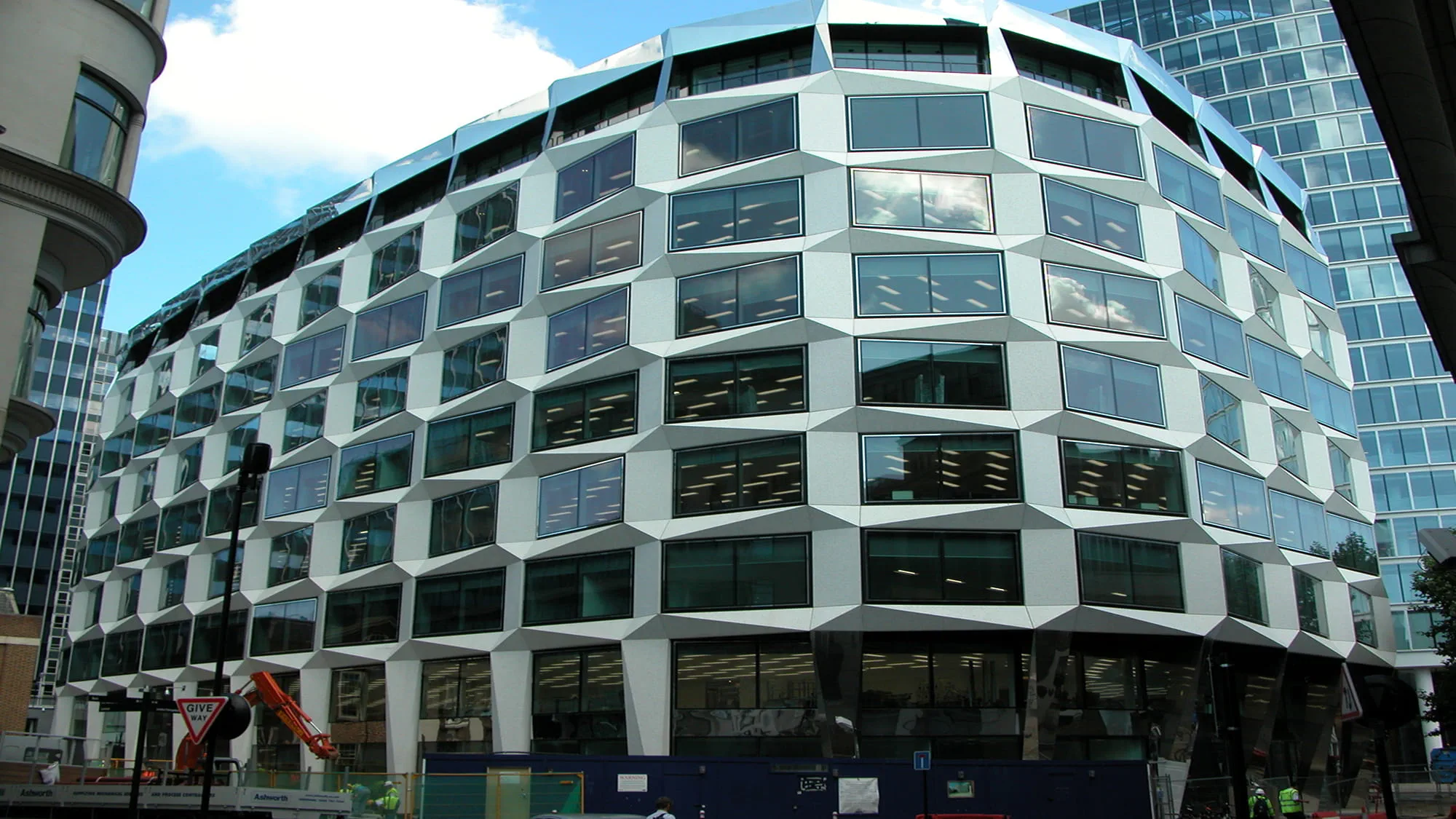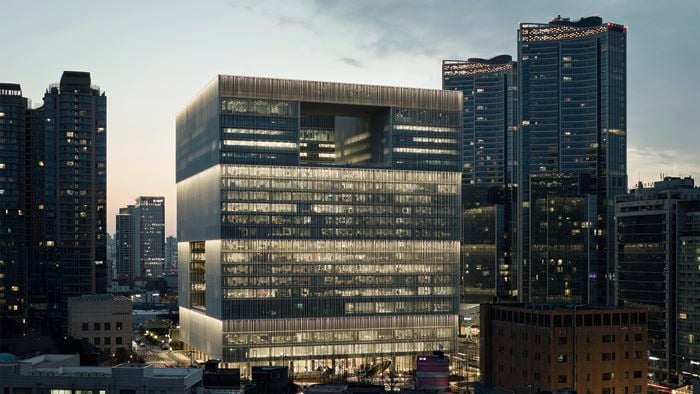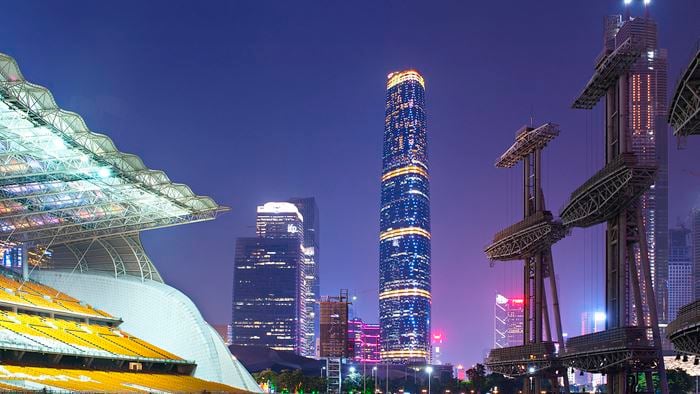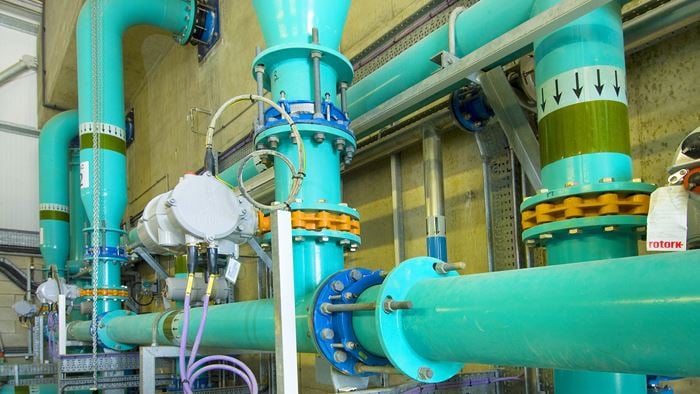One Coleman Street is a 180,000ft², ten-storey office development in a prime location along London Wall in the City of London. The office development incorporated a number of offsite pre-cast methods to speed construction, reduce waste on site and satisfy the requirements of the external façade geometry.
The building anticipated increased performance requirements under the Building Regulations, which were the stimulus to reduce glazing areas while enjoying external views from the building. This resulted in the striking external façade geometry that was realised using pre-cast concrete façade elements.
The main lift and stair cores used the twin wall pre-cast concrete core wall system to increase overall construction speeds. This was the first application of this system in the UK with composite steelwork floors.
A sustainable approach
The project was also the first major development in London to use recycled secondary aggregates in the main structural concrete. The project used the waste rock from china clay production, known as stent, for the course aggregate
Fly ash, a by-product from coal power stations, was used to replace cement in the concrete mix. The combination of stent and fly ash brought the overall recycled content of the main structural concrete to about 50% by mass or just over 70% by value.
Using 30-40% fly ash in place of Portland cement saved about 500 tonnes of CO2. Every cubic metre of this concrete saved one tonne of primary aggregate from being quarried and one tonne of waste from being tipped onto spoil heaps.
Using recycled content in concrete has been possible for some time. However, perceptions that it might not perform as well as traditional materials and that it might cost more have held it back.
By using recycled content effectively at One Coleman Street, Arup has established how these barriers can be broken down, and ‘waste’ material used on commercial projects. It has led to successful use of recyled content on other projects in London.
Each tonne of china clay produced generates around nine tonnes of waste. This means that 22m tonnes of china clay waste are stock-piled in Cornwall every year. Using stent for One Coleman Street removed the need to add more waste to the landscape or to quarry fresh aggregate.
Working with the concrete supplier (London Concrete) and concrete contractor (John Doyle), Arup was able to identify and use the material without compromising the performance of the building.
The firm was able to reduce the environmental impact of the concrete further by using fly ash instead of Portland cement. Fly ash has been used in concrete for a number of years. At One Coleman Street, however, Arup’s materials specialists specified higher proportions of fly ash than is typical for structural concrete – up to 40% instead of around 30% – after looking closely at the mix requirements.
Higher proportions of Portland cement make concrete stronger at an earlier stage of the drying process. By identifying places in the building where these properties were not required, the project team could use more fly ash in the concrete.
Short listed for the 2008 BCO Awards and winner of the 2007 Concrete Centre Award for Sustainability, One Coleman Street paves the way for more effective commercial office design and more appropriate use of materials in concrete.
 ;
;






